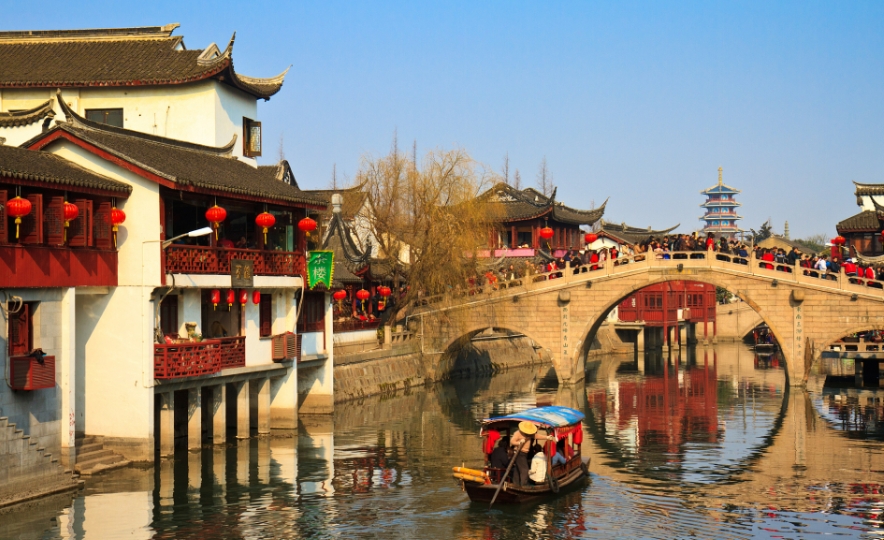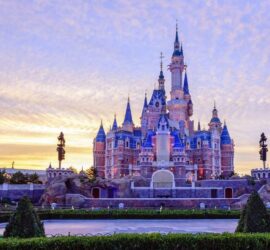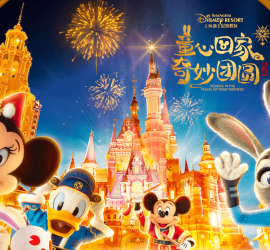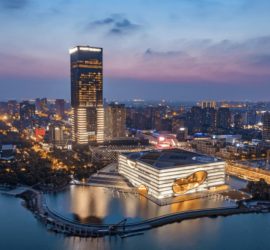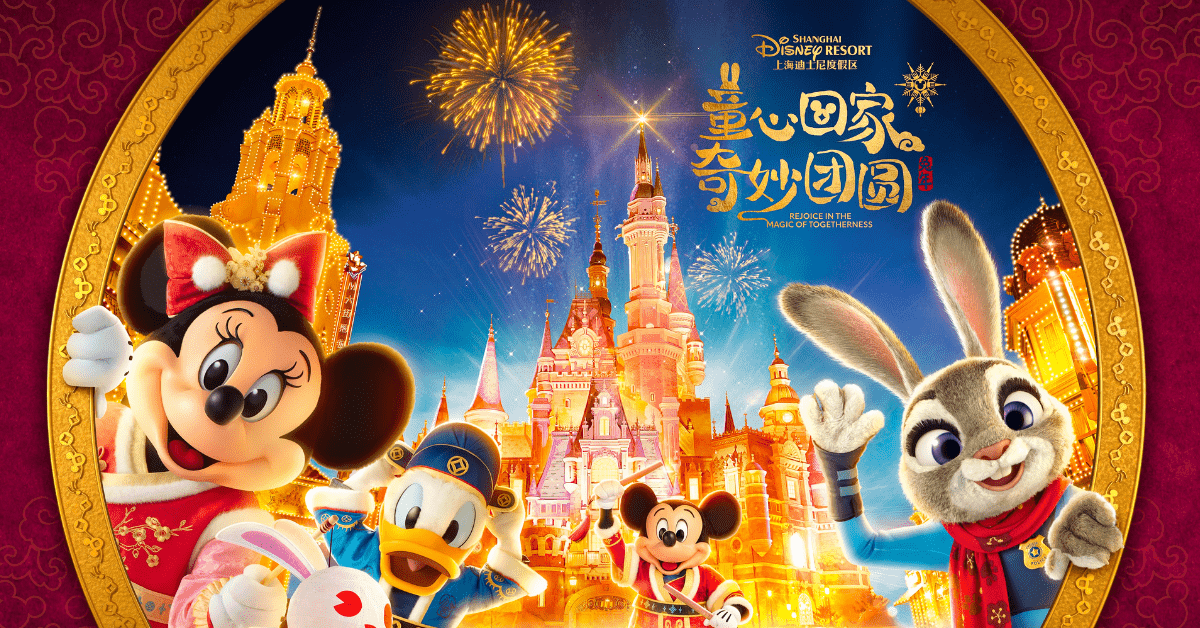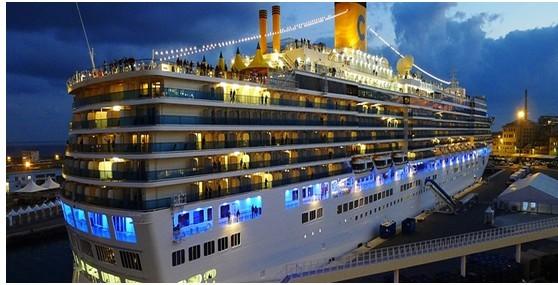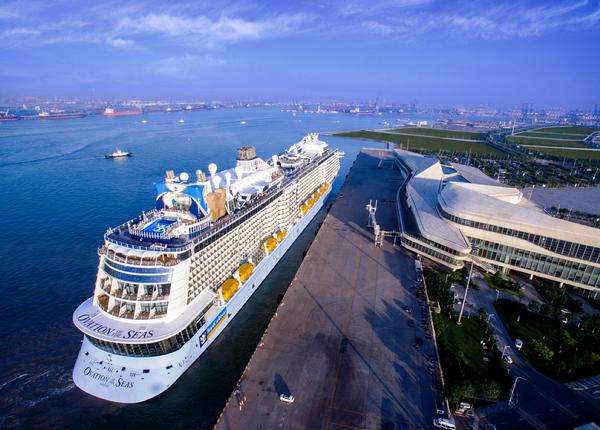Top 10 Shanghai water towns
The water villages around Shanghai provide a peaceful getaway from Shanghai’s hustle and bustle, preserving China’s rich cultural legacy. These villages attract travelers seeking a genuine insight into old Chinese cultures due to its history and charm. Each water town has its own charm, from scenic canals to well-preserved buildings, enabling tourists to experience centuries-old customs.
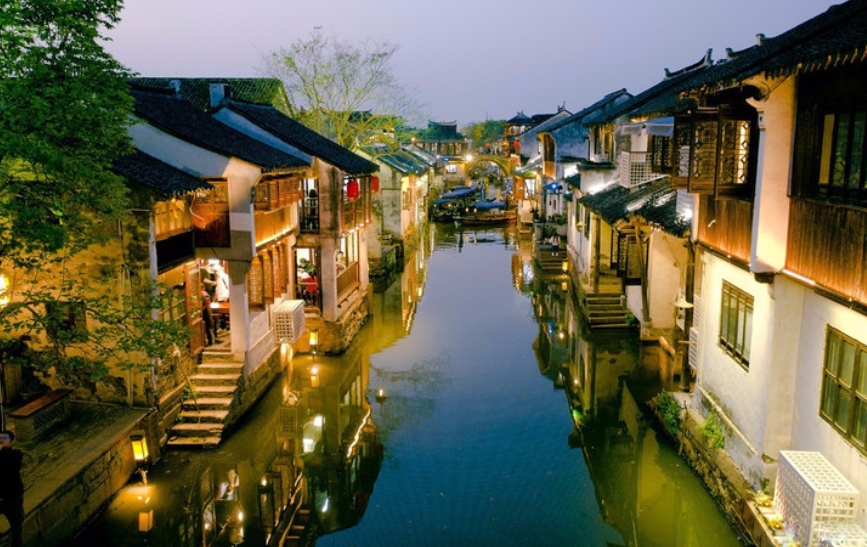
| Water Town | Distance to Shanghai | Features | Crowds | Entrance Ticket Price | Suggested Tour Duration |
|---|---|---|---|---|---|
| Zhujiajiao | Approximately 50 km | Picturesque canals, ancient bridges, temples | Moderate | Around 120 RMB | Half to full day |
| Zhouzhuang | Approximately 80 km | Charming canals, historic residences | High | About 100 RMB | Half to full day |
| Tongli | Approximately 80 km | Tranquil waterways, Ming and Qing architecture | Moderate | Around 100 RMB | Half to full day |
| Wuzhen | Approximately 120 km | Divided into East and West, cultural performances | High | About 150 RMB | Full day |
| Xitang | Approximately 90 km | Charming waterways, stone bridges | Moderate | Around 100 RMB | Half to full day |
| Nanxun | Approximately 130 km | Elegant gardens, historic residences | Low to Moderate | About 100 RMB | Half to full day |
| Luzhi | Approximately 75 km | Well-preserved ancient architecture | Low to Moderate | Around 100 RMB | Half to full day |
| Fengjing | Approximately 50 km | Idyllic countryside scenery, traditional architecture | Low | Around 80 RMB | Half to full day |
| Jinxi | Approximately 70 km | Well-preserved ancient architecture, stone bridges | Low | Around 80 RMB | Half to full day |
| Qibao | Approximately 18 km | Quaint ancient town, historic buildings | High | About 50 RMB | Half day |
1. Zhujiajiao Ancient Town
Zhujiajiao Ancient Town showcases China’s cultural legacy among the peaceful waters of Dianshan Lake. Visitors may witness imperial China’s past in this magnificent lake town’s 1,700-year history. Zhujiajiao, the “Venice of the East,” charms with its canals, bridges, and architecture.Walking through Zhujiajiao’s small streets evokes ancient China. Historic homes with ornate carvings and tiled roofs surround the cobblestone streets, conveying centuries-old stories. Temples silently witness the town’s spiritual legacy and give moments of peace despite the everyday grind.Waterways that flow through Zhujiajiao like lifeblood are a feature. Enjoy leisurely boat excursions around the canals to see old structures reflected in the water. Oar paddling creates a feeling of calm and transports passengers to a gentler period.Zhujiajiao’s appeal goes beyond its architecture to include its rich cultural heritage. Many local craftsmen practice ancient skills like silk weaving and Chinese calligraphy. Explore these historic arts and learn about generations-old traditions.Zhujiajiao has everything from street sellers to riverfront eateries for foodies. Shanghai’s “Xiaolongbao” (soup dumplings) and “Tangyuan” (sweet rice balls) delight the palate.Lanterns illuminate Zhujiajiao’s old alleys as the sun sets, creating a magnificent atmosphere. Evening canal walks with laughing and music reveal the town’s midnight appeal. Zhujiajiao Ancient Town left an unforgettable imprint on visitors, whether they explored its ancient sites or just enjoyed its timeless alleyways.
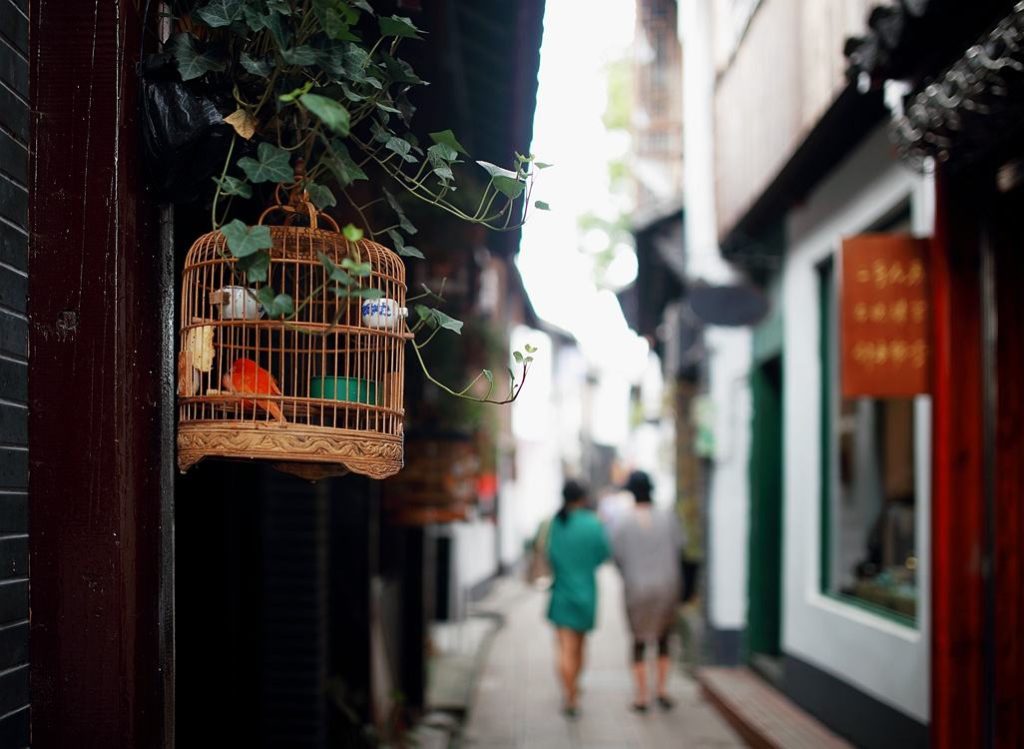
2. Water Town Zhouzhuang
Zhouzhuang Water Town, in Jiangsu Province’s countryside, draws guests with its timeless beauty and tranquility. Zhouzhuang, known as “Venice of the East” for its canals, stone bridges, and Ming and Qing era architecture, is one of China’s most renowned water cities.Entering Zhouzhuang is like entering a picture from years ago, where historic structures reflect in the peaceful waterways, creating a breathtaking landscape. Historic homes with carvings and tiled roofs showcase the town’s rich culture. Walking along the cobblestone alleys transports tourists to an age of imperial majesty and artistic elegance.Zhouzhuang’s Twin Bridges, stone arches that cross the town’s major canal, are famous. These Qing-era buildings represent Zhouzhuang’s timeless appeal, drawing artists and photographers from throughout the globe.Zhouzhuang has a rich population of artisans and craftsmen who conduct generations-old trades in addition to its architectural marvels. Visitors may see skillful artists weaving silk, carving wood, and making beautiful porcelain, revealing the town’s rich culture.Zhouzhuang has several teahouses and riverbank eateries serving traditional local food. Fresh river fish, soft lotus roots, and savory rice cakes take you on a Jiangsu gastronomic adventure.Lanterns illuminate Zhouzhuang’s old alleys at night, creating a wonderful atmosphere. As traditional music plays, canal boat trips let you experience the town’s nightlife. Everyone who visits Zhouzhuang Water Town is captivated by its ancient sites and timeless streets.
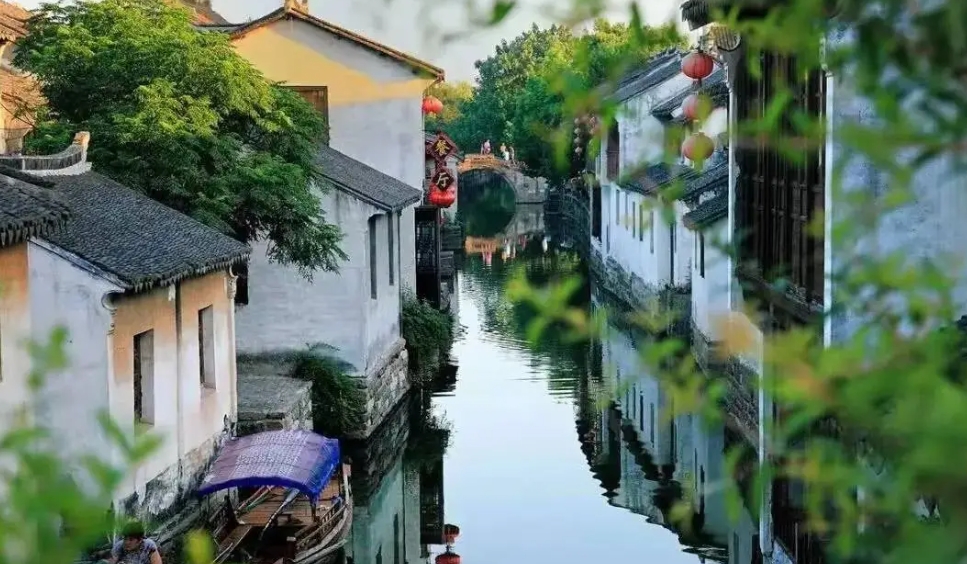
3. Water Town Tongli
Tongli Water Town, on Taihu Lake, oozes elegance with its well-preserved Ming and Qing era buildings and calm rivers. Tongli, known as the “Venice of the East,” inspires tourists with its canals, stone bridges, and old mansions that reveal imperial China’s past.Walking through Tongli’s cobblestone lanes reveals its rich cultural legacy, with antique houses with traditional carvings and tiled roofs. Beautifully planted historic gardens with pavilions and bridges provide calm among the busy streets.Tongli’s Three Bridges, three stone arches above the town’s major canal, are a feature. These Ming-era buildings represent Tongli’s timeless attractiveness, drawing painters and photographers from throughout the globe.Tongli is home to a lively population of artists and craftsmen who conduct generations-old trades in addition to its architectural marvels. Visitors may see skillful artists weaving silk, making bamboo furniture, and painting exquisite sceneries on porcelain, revealing the town’s rich cultural legacy.Tongli has everything from street sellers to riverfront eateries for real local food. Fresh river fish, soft lotus roots, and savory rice cakes take you on a Jiangsu gastronomic adventure.Lanterns illuminate Tongli’s old alleyways at night, creating a wonderful atmosphere. As traditional music plays, canal boat trips let you experience the town’s nightlife. Tongli Water Town creates a lasting effect on visitors, whether they explore its ancient treasures or just enjoy its timeless streets.
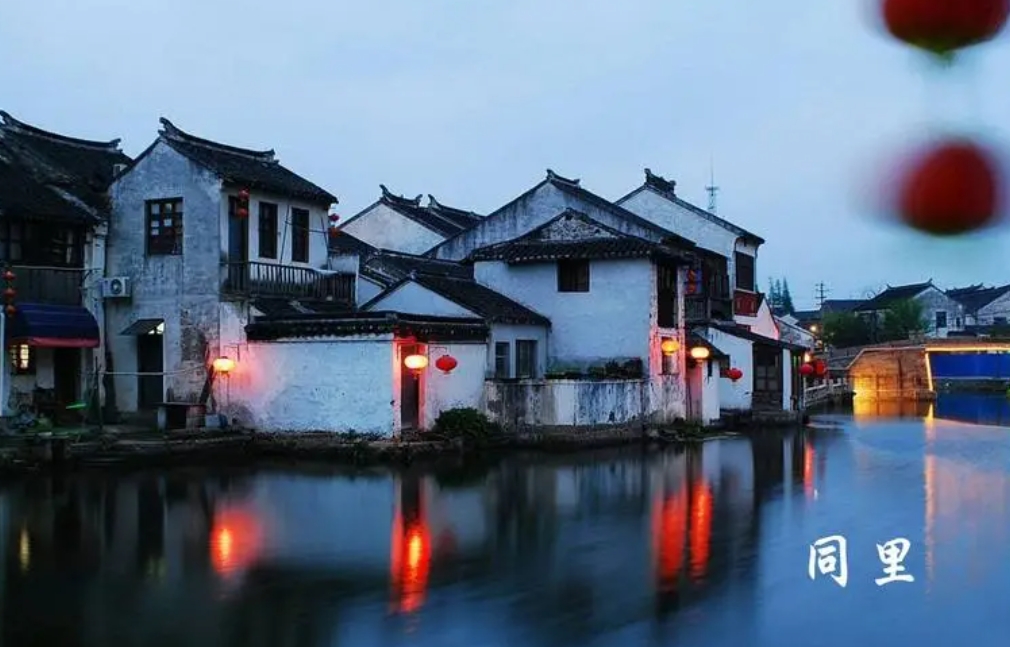
4. Water Town Wuzhen
Wuzhen Water Town takes tourists back in time to imperial majesty and cultural refinement along the Grand Canal. Wuzhen charms visitors with its waterways, ancient buildings, and traditional architecture in its East and West portions.Traditional Ming and Qing era structures and peaceful canals give Wuzhen’s East portion a timeless charm. Ancient houses with finely carved wooden facades and tiled roofs fill the cobblestone streets, revealing the town’s rich cultural past.The Hundred-Bed Museum, which depicts traditional Chinese family life, is a highlight of the East region. Exploring painstakingly reconstructed bedrooms, kitchens, and living areas helps visitors comprehend the town’s social norms.With its old market lanes and lively waterfront promenades, Wuzhen’s West side shows its commercial history. Local artists do silk weaving, bamboo carving, and papermaking, revealing Wuzhen’s rich culture.Wuzhen has everything from street sellers to riverbank eateries for real native food. Steamed dumplings, savory rice cakes, and sweet osmanthus cakes take you on a Zhejiang gastronomic adventure.Lanterns illuminate Wuzhen’s old alleys at night, creating a wonderful atmosphere. As traditional music plays, canal boat trips let you experience the town’s nightlife. Wuzhen Water Town creates a lasting effect on visitors, whether they explore its ancient sites or just enjoy its timeless streets.
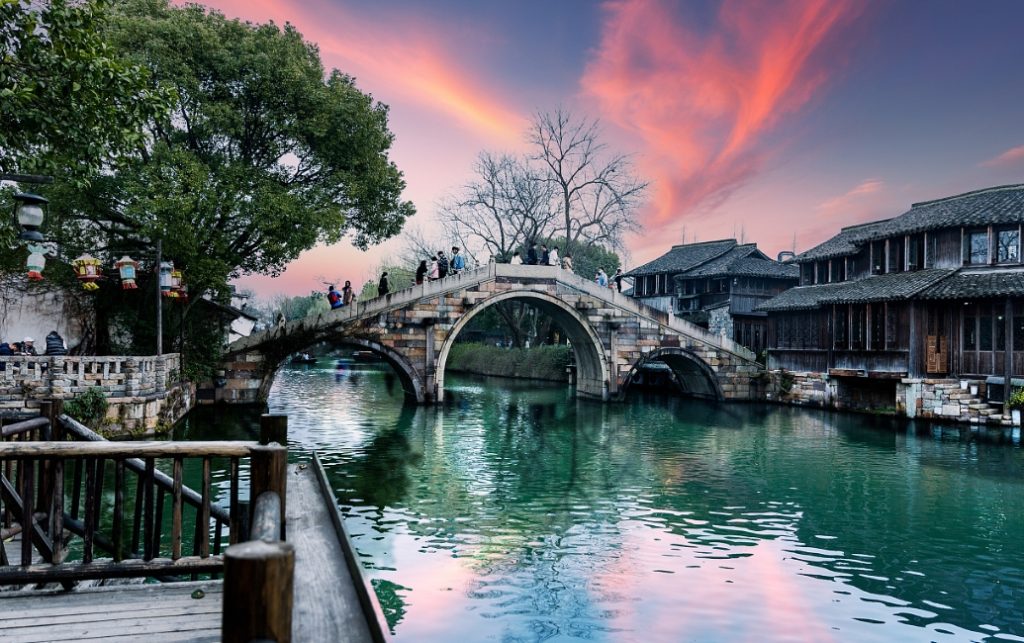
5. Water Town Xitang
Xitang Water Town’s meandering canals, stone bridges, and well-preserved Ming and Qing buildings give it a timeless appeal beside the Caoqiao River. One of China’s most renowned lake towns, Xitang has attracted tourists for ages with its beautiful beauty and rich culture.Xitang is like a picture from the past, with historic structures reflecting in the glistening waterways creating a breathtaking image. The town’s old homes, with traditional carvings and tiled roofs, reveal ancient Chinese families’ lifestyles.One of Xitang’s features is the Ming-era Nine Dragon Wall, a stunning monument with detailed dragon sculptures. This monument symbolizes Xitang’s cultural importance and draws tourists from across the globe to admire its architecture.Besides its architectural marvels, Xitang is home to a flourishing population of artists and craftsmen who perform generations-old skills. Visitors may see skillful artists weaving silk, carving wood, and making beautiful bamboo furniture, revealing the town’s rich cultural legacy.Xitang has several teahouses and riverbank eateries serving traditional local food. Fresh river fish, soft lotus roots, and savory rice cakes take you on a Jiangnan gastronomic adventure.Lanterns illuminate Xitang’s old alleys at night, creating a wonderful atmosphere. As traditional music plays, canal boat trips let you experience the town’s nightlife. Everyone who visits Xitang Water Town is captivated by its ancient sites and timeless streets.
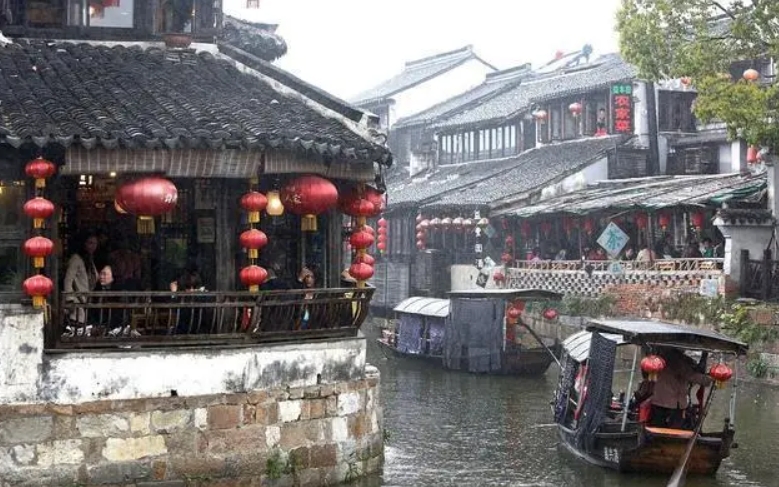
6. Water Town Nanxun
Nanxun Water Town is a hidden treasure in the calm Nanxi River for those seeking a getaway from contemporary life. Nanxun shows old Chinese aristocracy’s sophisticated lives with its magnificent gardens, stately mansions, and tranquil streams.Visitors to Nanxun are transported to an age of imperial majesty and cultural refinement as they walk the cobblestone streets. Historic homes with exquisite lattice windows and sculptures flank the coastline, offering centuries-old stories. The town’s beautifully designed gardens with pagodas, pavilions, and koi ponds provide peace from the busy streets.The huge Little Lotus Garden, originally owned by a rich silk trader, is a feature of Nanxun. The garden’s serpentine walks provide views of lotus blossoms and antique stone arches. Locals and tourists visit the garden to escape summer’s heat and humidity.Nanxun has a strong population of artisans and craftsmen who conduct generations-old trades in addition to its architectural marvels. Visitors may see skillful artists weaving silk, making bamboo furniture, and painting exquisite sceneries on porcelain, revealing the town’s rich cultural legacy.Nanxun has everything from street sellers to riverbank eateries for real local food. Fresh bamboo shoots, soft lotus roots, and savory river fish take you on a Zhejiang gastronomic adventure.Nighttime lights illuminate Nanxun’s old streets, creating a wonderful atmosphere. As traditional music plays, canal boat trips let you experience the town’s nightlife. Nanxun Water Town creates a lasting effect on visitors, whether they explore its ancient treasures or just enjoy its timeless streets.
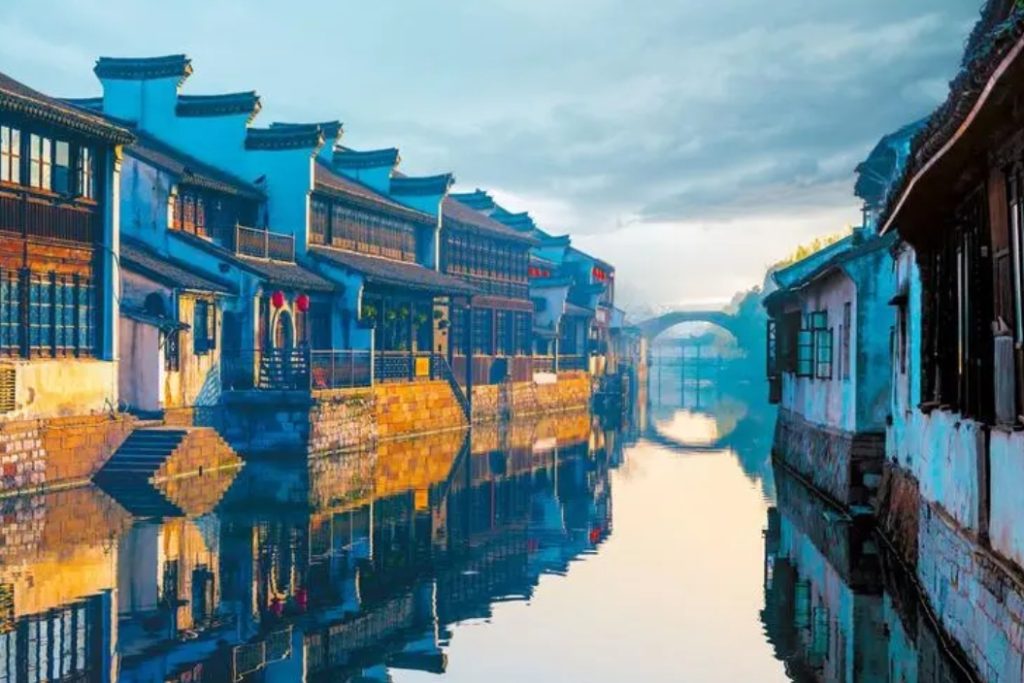
7. Water Town Luzhi
With its restored historic buildings, stone bridges, and calm canals, Luzhi Water Town oozes timeless beauty on the Beijing-Hangzhou Grand Canal. Luzhi, one of China’s oldest lake cities, has attracted tourists with its beauty and culture for generations.Luzhi transports visitors to a period of imperial majesty and cultural sophistication. The town’s old homes, with exquisite carvings and tiled roofs, reveal ancient Chinese families’ lifestyles. Walking along the cobblestone lanes, tourists may see historic pagodas, traditional teahouses, and charming handicraft stores.Luzhi’s Baosheng Temple, a 1,000-year-old Buddhist temple, is a highlight. The temple provides a peaceful retreat from the town’s busy streets among beautiful gardens and towering pagodas. Visit its magnificent halls, appreciate its old sculptures, and feel its spiritual atmosphere.In addition to its architectural marvels, Luzhi has a bustling population of artisans and craftsmen who conduct generations-old skills. Visitors may see skillful artists weaving silk, carving wood, and making beautiful porcelain, revealing the town’s rich culture.Luzhi has everything from street sellers to riverbank eateries for real local food. Fresh river fish, soft lotus roots, and savory rice cakes take you on a Jiangnan gastronomic adventure.Lanterns illuminate Luzhi’s old alleys at night, creating a wonderful atmosphere. As traditional music plays, canal boat trips let you experience the town’s nightlife. Everyone who visits Luzhi Water Town is captivated by its ancient sites and timeless streets.
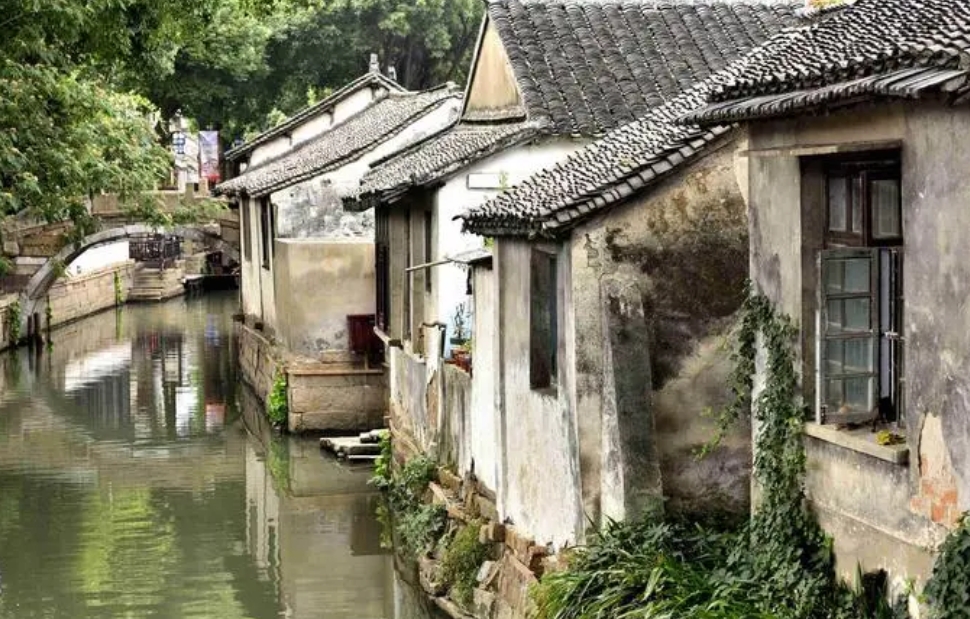
8. Water Town Fengjing
Fengjing Water Town, a hidden treasure in Shanghai’s lovely countryside, awaits guests seeking a respite from contemporary life. Fengjing showcases rural China’s timeless beauty with its old canals, traditional buildings, and lively culture.Through Fengjing’s small pathways, tourists are transported to an age of imperial majesty and cultural sophistication. Historic homes with beautiful carvings and tiled roofs fill the cobblestone lanes, revealing old Chinese families’ lifestyles. The town’s peaceful rivers, covered by historic stone bridges, provide for lovely boat excursions and strolls.Fengjing’s creative community thrives in its historic setting. Painting classic landscapes, creating exquisite clay figures, and making delicate paper cuts showcase the town’s rich cultural past. Visit Fengjing’s various art galleries and studios to see unique works inspired by its timeless beauty.Fengjing has a vibrant cuisine scene with restaurants for every taste, in addition to its art. Traditional delicacies like fresh river fish, soft lotus roots, and aromatic bamboo shoots may be found at street sellers selling snacks and sophisticated riverfront restaurants providing gourmet food.Nighttime lights illuminate Fengjing’s old alleyways, creating a wonderful atmosphere. With traditional music and the town’s historic sites lit up against the night sky, the sight is breathtaking. Visitors leave Fengjing Water Town with a lasting impression, whether they explore its cultural treasures or just enjoy its ageless streets.
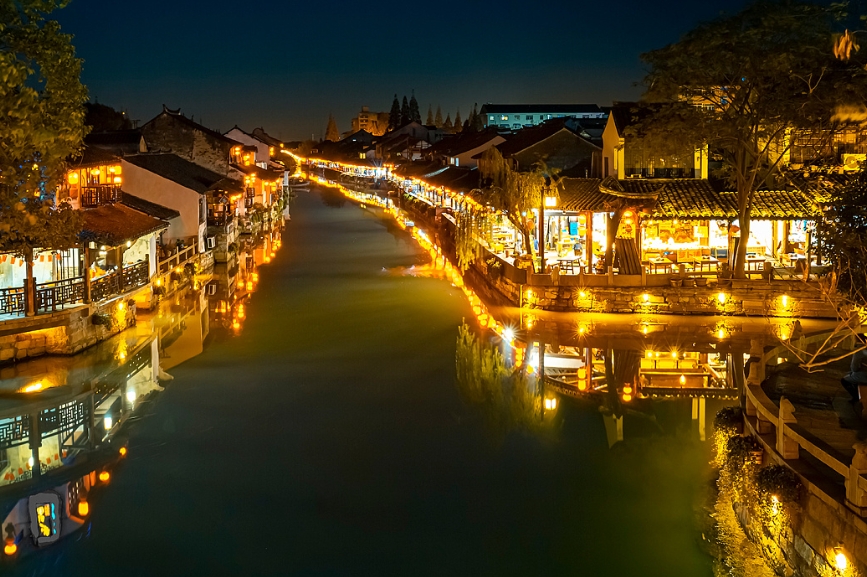
9. Water Town Jinxi
Jinxi Water Town, situated in the peaceful waters of Dianshan Lake, awaits guests seeking a getaway from contemporary life. Jinxi showcases rural China’s timeless beauty with its well-preserved historic buildings, tranquil rivers, and rich cultural legacy.Jinxi’s cobblestone lanes transport tourists to an age of imperial majesty and cultural sophistication. Historic waterfront homes with intricate carvings and tiled roofs reveal old Chinese family life. The town’s old bridges across the canals provide for lovely walks and boat trips.The 1,000-year-old Taoist Temple of the Five Gods is one of Jinxi’s attractions. The temple provides a peaceful retreat from the town’s busy streets among beautiful gardens and towering pagodas. Visit its magnificent halls, appreciate its old sculptures, and feel its spiritual atmosphere.In addition to its architectural marvels, Jinxi has a flourishing population of artists and craftsmen who conduct generations-old skills. Visitors may see skillful artists weaving silk, carving wood, and making beautiful porcelain, revealing the town’s rich culture.Jinxi has everything from street sellers to riverfront eateries for real local food. Fresh bamboo shoots, soft lotus roots, and delicious river fish take you on a Jiangnan gastronomic adventure.Nighttime lights illuminate Jinxi’s old streets, creating a wonderful atmosphere. As traditional music plays, canal boat trips let you experience the town’s nightlife. Everyone who visits Jinxi Water Town is captivated by its ancient sites and timeless streets.
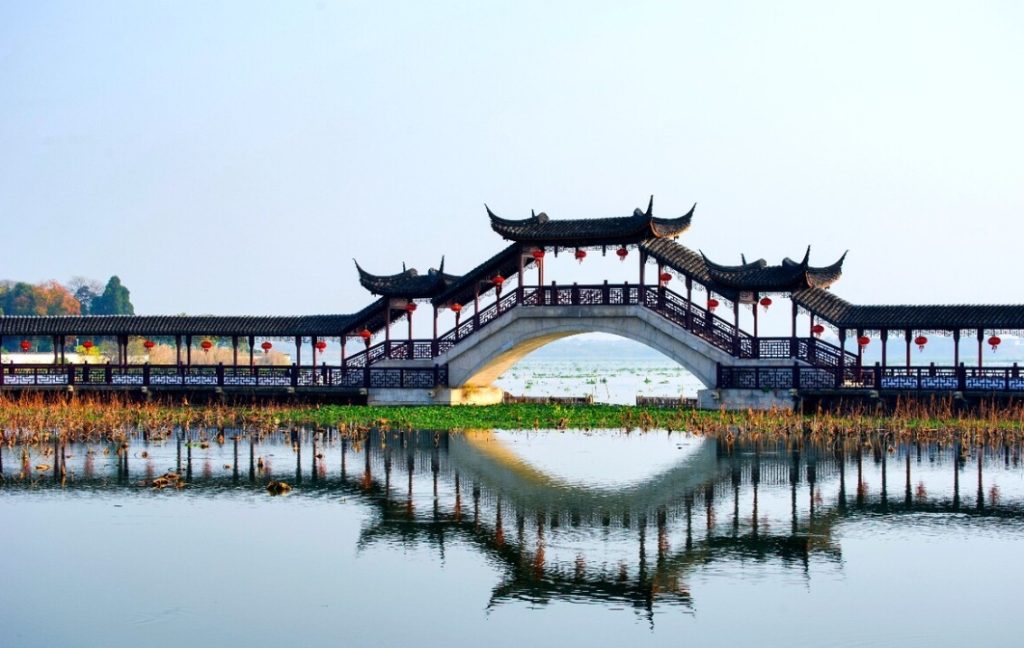
10. Ancient Qibao Town
Located in Minhang District, Shanghai, Qibao Ancient Town is a calm oasis in the city. Qibao gives a look into imperial China’s past with its well-preserved ancient structures, busy marketplaces, and rich cultural history.Walking through Qibao’s small pathways takes tourists back in time to a period of antique charm and cultural sophistication. Historic homes with intricate carvings and tiled roofs fill the cobblestone lanes, revealing old Chinese families’ lifestyles. The town’s old pagodas, rising above the busy streets, inspire awe.A thousand-year-old Buddhist temple, Qibao Temple, is a centerpiece of the city. The temple provides a peaceful retreat from everyday life among beautiful grounds and quiet ponds. Visitors may wander its magnificent halls, view its old sculptures, and feel its spiritual atmosphere.In addition to its architectural marvels, Qibao has a flourishing population of artisans and craftsmen who conduct generations-old skills. Visitors may see skillful artists weaving silk, making bamboo furniture, and painting exquisite sceneries on porcelain, revealing the town’s rich cultural legacy.Qibao has everything from street sellers to riverbank eateries for real local food. Delicious steamed dumplings, savory rice cakes, and sweet osmanthus cakes take you on a Shanghai gastronomic adventure.Lanterns illuminate Qibao’s old alleys at night, creating a wonderful atmosphere. Night markets with colorful wares and cuisines and traditional music create a lively mood. Travelers leave Qibao Ancient Town with a lasting impression, whether they explore its ancient sights or just enjoy its timeless streets.
